
Welcome to the Onam edition of the COMA newsletter. Onam, to most of us, is a reminder of childhood memories and family get-togethers. Onam celebrations are an integral part of every immigrant Malayalee’s life. These celebrations bring together people regardless of political and religious affiliations, and that I feel is what makes them special and unique. I am really looking forward to meeting you all at the COMA Onam celebrations this year, which also promises to be a visual treat for all of us.
This year’s Onam celebrations will give us a unique opportunity to give back to our community back home. Renowned magician and humanitarian Prof. Gopinath Muthukad will be visiting us for the COMA Onam celebrations. Please use the opportunity to meet with him and support his charitable organization, Different Art Centre (DAC), aimed at empowering and educating specially abled children. Please read Hari Narayanswamy’s article below for details, and reach out to the COMA Executive Committee (coma.officials@gmail.com) if you have questions.
Wishing you and your family a very happy Onam season!
— Smitha Nishant

My Perspective of Onam Growing Up in the United States – by Krishna Velayudhan
(Krishna Velayudhan is a Supervising Attorney at Discover Financial Services licensed to practice law in Ohio for the past 21 years. He is an avid outdoorsman and currently lives in Powell, Ohio with his wife Reshma and two children, Nikhil and Rhea.)
As a Malayali brought up in the United States, I would like to share my thoughts and experiences with respect to Onam. As a young child growing up in Cleveland, Ohio, the Malayali community thirty years ago in this region was small and sparsely populated. Back in the 1980s, Gurukul classes were not offered and the only temple in the area was a small Shiva Vishnu temple that was recently built and a place where my family prayed on a regular basis.
My parents therefore made it a high priority for both my sisters and I to visit Thrissur, Kerala every summer vacation during my elementary and middle school years. I remember during my fourth grade summer vacation in Kerala, my parents decided to extend their stay into the middle of September two weeks past the start of the 5th grade school year so that we can experience the Onam festival at our ancestral home in Chathannoor. My initial reaction of staying an additional two weeks and missing the start of the school year was of horror but then I quickly realized how lucky I was to experience the Onam festival in Kerala. I remember seeing our paddy field workers bringing several bags of harvested rice to our outdoor garage and pouring the rice into a large pile. The house would be decorated with different flower kolam arrangements and white kolam decorations. The rice that was brought from the paddy fields would then be given by my family to other families from the community in need. My parents, grandparents, and other relatives would recount the sacred story of Vamana and Mahabali to illustrate the significance of Onam and reminding ourselves the lesson from the story to always keep any promises made. It was a wonderful experience to be a part of, and is a childhood memory I really cherish.

A young Krishna from the 80s in front of his ancestral home
My life growing up in US has been unique based on the experiences I shared above. It is important to blend one’s own cultural heritage to the external environment they are a part of in order to reap the benefits of both cultures. This has helped shape me into the person I am today.

Old time Kerala festivities – by Kadambari Namboodiri
(The Namboodiris took their doctorates from U. of MI, Ann Arbor, went back to U. of Kerala, and returned to the U. of N. Carolina, Chapel Hill in the early 70’s. When Krishnan was offered an endowed, eminent professorship at OSU, Columbus, they moved to Columbus in ’84. After Dr. Krishnan’s passing in 2015, Kadambari moved to Cleveland to spend her sunset years near her daughter. Now, entering the 9th decade of her life, she remembers past events and friends, and maintains a positive outlook.)
I was asked to write something about Onam celebrations before COMA was organized. I don’t know who will be interested in ancient tales.
But one take home lesson is: uprooted Keralites, in small or large numbers, are proud of their home land, and find a way to gather and celebrate the traditional cultural festivals like Onam and Christmas, the best they can.
We moved to Columbus from N. Carolina in 1984 and joined OSU as faculty. That was 40 years ago! Stone age years for youngsters now: no ubiquitous cell phones, Google, ChatGPT, or AI in our tool box! Such primitive times!
Yet, the handful of Malayalees in Columbus and vicinity at that time found a way to meet and chat and share personal experiences and helpful tips. We all gathered at a church for our first Onam, a true demonstration of religious harmony, to celebrate cultural heritage! People were so resourceful that they had Onam songs, vanchi pattu, and finally the appearance of Maveli! At least, kids had a small exposure to our family reunions, cultural background, and fabulous feasts!
Just like for Onam, we gathered in the same church for our Christmas celebrations also. There were Christmas carols, Santa appearing for gift exchanges for small kids, and a fantastic feast to crown the celebration. Amazing how a small group of people could replicate our homeland culture, in love and harmony!
As years went by, numbers increased, venues like library, schools were explored, pot luck model feast became cumbersome. Some young, enthusiastic youngsters like Pradip, Valsan, and others stepped in to take lead roles in officially organizing a group, and COMA was born! So proud that it has grown and is involved in so many new activities and is strengthening our community.
I congratulate the COMA officials for all their community outreach programs, youth programs, and sports activities, in addition to the traditional cultural festivities! Best wishes for your continued efforts to blend the past and present cultures in this shrinking world!
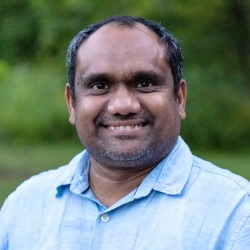
മാപ്പിളരാമായണം – by Sachin Sugathan
(Sachin has been an active member of COMA from 2011, and lives with his wife Preeti and daughter Sahasra in Galena, Ohio.)
ഒരു കർക്കിടകം കൂടി കടന്നു പോകുന്നു. കോരിപ്പെയ്യുന്ന മഴയുടെ അകമ്പടിയോടെ സന്ധ്യാദീപം സാക്ഷിയാക്കി മലയാളികൾ രാമായണം പാരായണം ചെയ്യുന്ന മാസം. സാധാരണയായി കേരളീയരുടെ ഇടയിൽ പ്രചാരത്തിലുള്ള രാമായണം, തുഞ്ചത്തെഴുത്തച്ഛൻ രചിച്ച അദ്ധ്യാത്മരാമായണം കിളിപ്പാട്ട് എന്ന പതിപ്പാണ്. ത്രേതായുഗത്തിൽ മഹാമുനി വാല്മീകി സംസ്കൃതത്തിൽ രചിച്ച ഈ മഹാകാവ്യത്തിന്, ഇന്ന് മുന്നൂറിൽ പരം പതിപ്പുകൾ ഉണ്ടെന്നു കരുതപ്പെടുന്നു.
അതിലൊരുപക്ഷേ ഏറ്റവും കൗതുകകരവും, വിചിത്രവും ആയ ഒരു പതിപ്പു, കേരളത്തിലെ മാപ്പിളരാമായണം ആയിരിക്കും. എന്നാൽ മാപ്പിളരാമായണം രാമായണമേയല്ല എന്ന് വാദിക്കുന്നവരുമുണ്ട്.
മലബാറിലെ നാദാപുരത്തുള്ള ഹിന്ദു വിശ്വാസികൾ അവരുടെ മുസ്ലിം സഹോദരങ്ങൾക്ക് മനസ്സിലാവാൻ അവരുടെ രീതിയിൽ, അവര്ക്കു മനസിലാകുന്ന ഭാഷയിൽ, മാപ്പിളപ്പാട്ടിന്റെ ഈണത്തിൽ പാടിയ രാമായണം: നർമത്തിൽ പൊതിഞ്ഞ ഈ കൃതി അത്യധികം ശ്രവണസുന്ദരവുമാണ്.
ആ രാമായണപ്പാട്ട്, അല്ല ലാമയാണപ്പാട്ട് തുടങ്ങുന്നത് ഇങ്ങനെ ആണ് (മാപ്പിളപ്പാട്ടിന്റെ ഈണത്തിൽ പാടാൻ ശ്രമിക്കുക..)
“പണ്ടു താടിക്കാരനൌലി പാടിവന്നൊരു പാട്ട്
കണ്ടതല്ലേ ഞമ്മളീ ലാമായണംകഥ പാട്ട്
കർക്കിടകം കാത്തുകാത്തു കുത്തിരിക്കും പാട്ട്
കാതു രണ്ടിലും കൈവിരലിട്ടോരികൂട്ടും പാട്ട്
മൂന്നുപെണ്ണിനെ ദശരഥൻ നിക്കാഹ് ചെയ്ത പാട്ട്.
അമ്മികുമ്മായം മറിഞ്ഞും മക്കളില്ലാ പാട്ട്”
ഇതിലെ “താടിക്കാരനൌലി” (താടിക്കാരനായ മൗലവി) മറ്റാരും അല്ല നമ്മുടെ സ്വന്തം വാൽമീകി തന്നെ. വളരെ രസകരമായ രണ്ടു വരികളിൽ രാമായണത്തിന്റെ മൊത്തം കഥ ഇതിൽ സംഗ്രഹിക്കുന്നു..
“കെട്ടിയോൾക്ക് വരംകൊടുത്തു സുയുപ്പിലായൊരു പാട്ട്
ലങ്കവാഴും പത്തുമൂക്കനെ ഹലാക്കിലാക്കിയ പാട്ട്”
ഈയിടെ പ്രിയ സുഹൃത്ത് അരവിന്ദിന്റെ നേതൃത്വത്തിൽ ഇവിടുത്തെ മലയാളികളുടെ ഒരു കൂട്ടായ്മ, ശ്രീ വെങ്കടേശ്വര ക്ഷേത്രത്തില് ഒരു രാമായണ മാസ ആചരണദിനം സംഘടിപ്പിക്കുകയുണ്ടായി. ആ ദിനത്തില് ചില സുഹൃത്തുക്കളും അവരുടെ മാതാപിതാക്കളും സുന്ദരകാണ്ഡത്തിലെ ആദ്യ ഭാഗങ്ങളാണ് പാരായണത്തിന് തിരഞ്ഞെടുത്തത്. ശ്രീരാമദേവന് വേണ്ടി സീതാദേവിയുടെ പക്കൽ അശോകവനയിലേക്കു ദൂതുപോകുന്ന ഹനുമാൻ. പവനപുത്രന്റെ സാഹസികതയും നിസ്വാര്ത്ഥതയും ശ്രീരാമനോടുള്ള ഉപാസനയും വര്ണ്ണിക്കുന്ന സുന്ദരകാന്ധം. ആ സുന്ദരകാണ്ഡത്തിന് സമാനമായ മാപ്പിളരാമായണത്തിലെ വരികൾ ഇങ്ങനെ ആണ്..
“കാലൻ കരിങ്കാലൻ ലാവണൻ പത്തുതാടിവടിപ്പിക്കും നേരത്ത്
വാലുള്ളനുമാനോ ലങ്കയിൽ ചാടി ചേലുള്ള പൂകൊമ്പത്തുന് കീയണ്”
പത്തു തലയുള്ള രാവണന് വടിക്കാൻ പത്തു താടിയും കാണുമല്ലോ, അപ്പോപ്പിന്നെ ഹനുമാന് ഇതിലും നല്ലൊരവസരം എപ്പോൾ കിട്ടാൻ..
കർത്താവാരെന്നോ രചനാകാലം ഏതെന്നോ വ്യക്തമായി അറിയാത്ത മാപ്പിളരാമായണം. ഈ കൃതി മുന്നോട്ടു വെക്കുന്ന മതസൗഹാർദ്ദത്തിന്റെയും സാഹോദര്യത്തിന്റെയും സന്ദേശം ചെറുതല്ല.
നന്ദി,
സച്ചിൻ

COMA T7 Cricket Tournament – by Ravi Hariharan
(Ravi Hariharan lives in Powell with wife Ramya and two kids (Sahana and Saanav). A music and sports enthusiast for whom writing was once a hobby.)
The sun had set on what had been an enthralling day of cricket, yet there remained one final battle to be won in the inaugural COMA T7 cricket tournament. The floodlights illuminated Field 2 of Anheuser Busch Park, casting their glow upon the scene. A lively film score played in the background, with the IPL theme occasionally interjecting, adding to the crowd’s energy. Additionally, ongoing cricket commentary added spice to the proceedings.
The coin was tossed, and in this climactic showdown, the ADC Royal Strikers opted to bowl after winning the toss. Facing them in the final were the VCC Risers, who exhibited spirited batting skills and amassed 61 runs in their designated 7 overs. The VCC Risers continued their impressive performance by delivering a valiant bowling display. Unfortunately for the ADC Royal Strikers, who had fought gallantly throughout the league and playoff games, they stumbled at the last hurdle, managing to score only 30 runs before losing all their wickets.
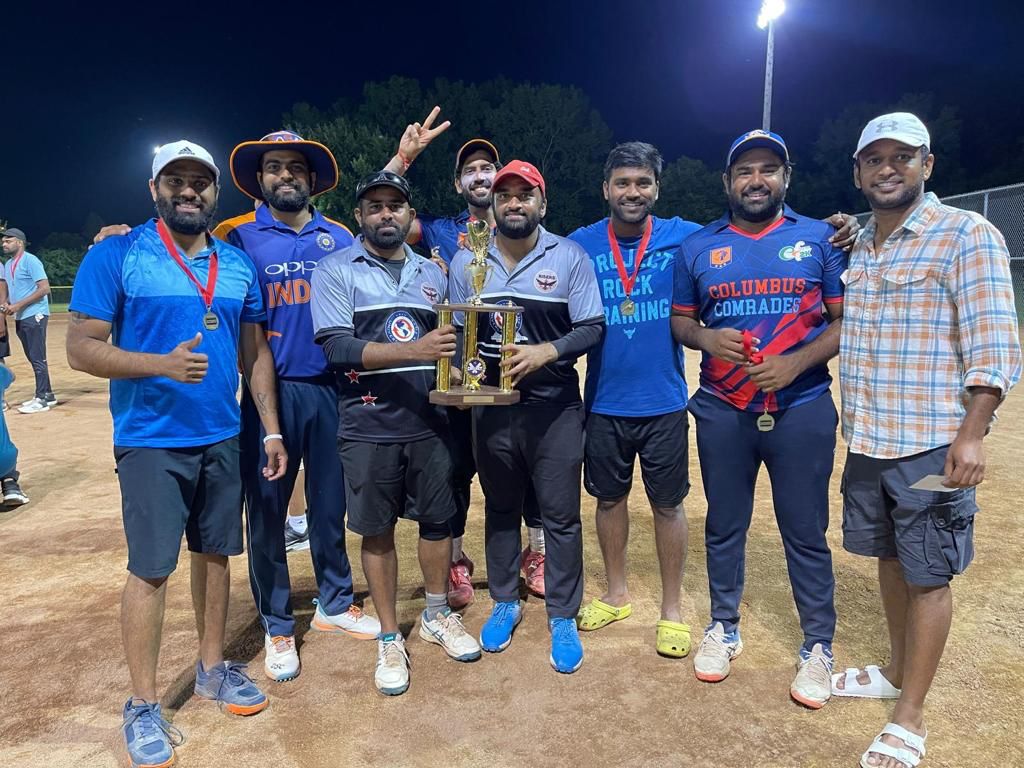
Division 1 Champions VCC Risers with the COMA trophy
The winners of Division 1, VCC Risers, and the runners-up, ADC Royal Strikers, were presented with their respective trophies and prize money. Trophies were also awarded to the Division 2 Champions, Hustlers, and the Division 2 Runners-up, PDCC United. The event was generously sponsored by Ram from Devcare Solutions and Sony Joseph from RedOne Realty, both of whom were present throughout most of the day’s proceedings.
Flashback to the beginning of the day, the tournament commenced promptly at 8 a.m. with an enthusiastic ladies’ game between CCC Stars and Buckeyes, with the Buckeyes emerging as the champions. The prizes for the women’s winners and runners-up were sponsored by Indian Trendz (Kumkum). This was followed by a series of 50+ league games involving 32 teams, which continued until 2 PM. Teams from all corners of Ohio and beyond participated, united by their unwavering passion for cricket and their excitement for what the inaugural COMA tournament had to offer.
Despite the unrelenting heat, with temperatures hovering around the late 80s, the teams’ spirits remained undampened. The volunteers and individuals at the registration desk ensured clear communication with the teams about their match timings, guaranteeing that all league games were completed on schedule. The umpires, who oversaw the games, performed admirably in their roles despite the intense emotions and pressures of fierce competition. Throughout the day, food was catered by Daawat restaurant and included sumptuous idli, pongal, vada chutney for breakfast, biriyani for lunch, and chai and snacks in the evening.
Once the 16 teams for the league games were determined, the matches proceeded. The league games were highly competitive, with teams battling fiercely and each match providing nail-biting moments. There was even a game that required a Super Over to determine the winner. As the tournament progressed through the quarter-finals and semi-finals, players may have grown fatigued, but the quality of the games continued to rise.
A highlight of the evening was the mesmerizing Tesla light show, orchestrated by Valsan, Girish, Vinay, and Dilin. The crowd enthusiastically captured the spectacle in photos and videos. The success of the event was largely attributed to the tireless efforts of the EC team, including Shibu, Arun Davis, Pradeesh, Sachin, and Roopesh, who led the event. The EC team also acknowledged the pivotal roles played by Arun Chand and Kiran Elavankal in event coordination and management, likening their contributions to cricketing terms by stating that “we bat around them.”

In the closing moments of the tournament, as the sun dipped below the horizon and the floodlights took center stage, a sense of camaraderie and achievement hung in the air. Players, spectators, and volunteers gathered together, reflecting on the day’s triumphs and challenges. The echoes of cheers, the thrill of close matches, and the shared passion for cricket had woven an unforgettable tapestry of memories that will endure for a long time. With gratitude in their hearts, the participants and organizers now eagerly anticipate future editions of the COMA T7 cricket tournament.
COMA T7 news published in leading Malayalam online newspaper editions
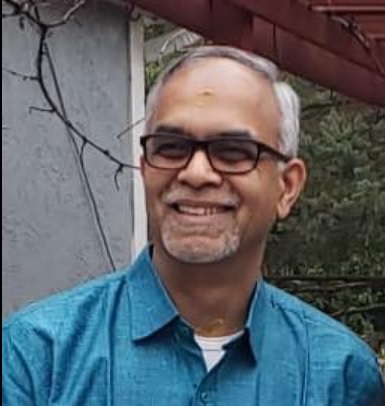
From magic to being magical: Meet Sri Gopinath Muthukad – by Hari Narayanaswamy
(Hari is a former President and multi-year trustee for COMA. He lives in Dublin, Ohio with his wife Meera.)
The exhilarating view of open mouths and dropped jaws in the audience, the twinkling eyes and stunned expressions of ‘how in the world’, is the dream of every magic performer. What could be greater than the awe, admiration, and riches one can get from performing on international stages? Ask Sri Muthukad and he will tell you that real magic is about making a difference in the lives of people, bringing out innate talent, and creating joy for those who unfortunately appear to have been deprived of both.
In 2019, Mr. Muthukad created the Center for Differently-abled Children (DAC), aimed at developing the artistic talents of differently-abled children and using the art and skill of magic as a means for aiding their development and integration into society. This art and magic focused special education school was set up with the support of the Government of Kerala, as part of its Social Security Mission, and has now expanded its capacity to support more than 200 children, including residential programs. Those of you who have had the opportunity to attend the COMA Onam program in 2020 would remember the live streaming of the exclusive performance these children had put together for us. What has been unforgettable for many of us from that day are the tears of joy and pride we saw in their parents’ eyes.

Today, DAC has expanded its reach, opening the International Institution for People with Disabilities (IIPD) at Kasaragod, Kerala where the developmental issues in children associated with the use of endosulfan in fertilizers has created a havoc. The efforts of DAC on art based rehabilitation of children with disabilities has met with considerable success, and attracts student population at a national level in India.
While DAC is a blessing to the society, the unfortunate reality is that the need at national level far exceeds what it can do. Institutions like DAC need the support and encouragement from those of us who are willing to give back to society. This isn’t just another non-profit working on a social cause, but a calling to fulfill our duty to a section of society who have an opportunity to discover the joy of creativity and pride of self-esteem, just not by staying on the fringes of society but being very much an integral part of it.
COMA will be hosting Sri Gopinath Muthukad on Sep 8th for a fund-raising dinner and 9th as part of the Onam program. Please make use of the opportunity to interact with him to find out more and extend your support for the great mission he has taken up. Together, let’s ‘Make a Difference’!
Onam Recipes from our members

Puli Inchi / Inchi Puli / Inchi Curry – by Nithya Rajeev
(Nithya Rajeev lives in Plain City with her husband Rajeev and two children, Niraj and Niranjana. She hails from Alappuzha.)
Puli Inji, also called Inji Puli or Inji Curry, is an inevitable dish in a Kerala Sadhya. It can be stored as a pickle in the refrigerator for many days.
Serves: 25 people
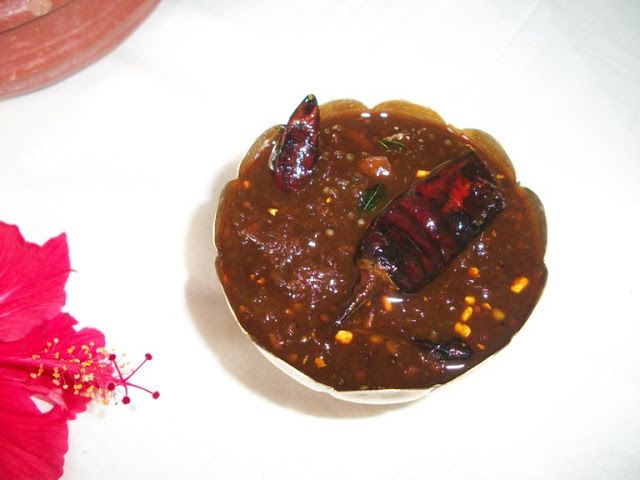
Ingredients
- Finely Chopped Ginger (ഇഞ്ചി ചെറുതായി അരിഞ്ഞത്) – 1½ Cup (150 gm)
- Tamarind (വാളൻപുളി) – Large Lime Size (50 gm)
- Hot Water (ചൂടുവെള്ളം) – 2½ Cup (625 ml)
- Coconut Oil (വെളിച്ചെണ്ണ) – 4 Tablespoons (60 ml)
- Shallot (ചെറിയ ഉള്ളി) – 10 Nos (50 gm)
- Mustard Seeds – 1 Teaspoon
- Green Chilli (പച്ചമുളക്) – 2 Nos (20 gm)
- Curry Leaves (കറിവേപ്പില) – 2 Sprigs
- Chilli Powder (മുളകുപൊടി) – ½ Tablespoon
- Turmeric Powder (മഞ്ഞള്പൊടി) – ½ Teaspoon
- Asafetida Powder (കായം പൊടി ) – ¼ Teaspoon (optional)
- Salt (ഉപ്പ്) – 2 Teaspoons
- Crushed Jaggery (ശർക്കര പൊടിച്ചത്) or Brown Sugar – 6 Tablespoon (60 gm)
In a pan add 4 tablespoon coconut oil or any oil of your choice. When the oil is hot, add chopped ginger, chopped shallots, curry leaves one string, and chopped green chilli. When the shallots turn golden brown, remove from the pan and keep aside. In the same pan, add one tablespoon of coconut oil, and when it is hot, add mustard seeds, one string curry leaves, one shallot, and red chilli. Add chilly powder, turmeric powder, and asafetida powder (കായം പൊടി), and immediately add hot water. Once it starts boiling, add the fried ingredients, salt, tamarind (soaked in water and squeezed), and jaggery. Keep it in simmer, and when it reaches your desired consistency, remove from the stove. Once cooled, store in a dry air tight container. Enjoy the puli inchi with your dear ones.

Mulakapachadi – by Aswathi Pradeesh
(Aswathi Pradeesh hails from Malappuram, Kerala, and currently lives in Delaware, Ohio with her husband Pradeesh and two children Aadhya and Dhyan.)
Ingredients
- Tamarind-Tennis ball size
- Chilly Powder – 1 tsp
- Turmeric Powder-1/2 tsp
- Salt as needed
- Green Chillies – 10 to 15
- Coconut Oil – 2 tbs
- Jaggery Cubes – 7
- Mustard Seeds, Red Chilies, Curry Leaves – For Tadka
- Urad Dal – 1 Tbs
- Sesame Seeds – 1tbs
- Mustard Seeds – 1 tbs
- Fenugreek Seeds – 1 tbs

Dry roast and grind urad dal, mustard seeds, fenugreek seeds, and sesame seeds separately, and set aside. Soak tamarind in water and separate the pulp out of it. Boil the tamarind pulp, chili powder, turmeric powder, and salt for 10 to 15 minutes. Fry the green chilies in the oil in a pan and add it to the tamarind mixture along with the jaggery cubes, and let it simmer. When the raw taste of the tamarind pulp is gone, add mustard seeds and boil the mix for 5 minutes. Add sesame seed powder and switch off the flame, and add tadka. When this mixture cools down a bit, add the powdered urad dal and fenugreek seeds, and mulakapachadi is ready to serve!
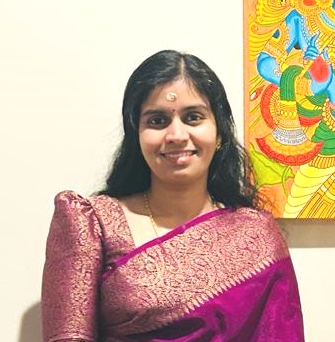
Instant Pot Paal Payasam – by Remya Krishnan
(Remya is a native of Palakkad, Kerala, and lives with her husband Madhu and two kids in Galena, Ohio. She has been an active member of the community since 2015. She works at JP Morgan Chase.)
Ingredients
- Ghee – 2 teaspoons
- Rice (raw rice, matta, or basmati) – 1/4 cup
- Whole milk – 4 cups
- Sugar – 1/2 cup
- Cardamom powder – a pinch
- Cashews (fried in ghee) – a few
Grease the inner pot of the Instant Pot with 2 tsps of ghee. Add 1/4 cup washed and drained raw rice, matta rice, or basmati rice. Add four cups whole milk followed by 1/2 cup sugar. Keep the vent sealed. Steam (“more“) for 25 minutes for thicker consistency. Steam (“more“) for 20 minutes for thinner consistency. The color changes to light pink with either of the timings.
After the cycle completes, let the pressure release naturally (npr). Add a pinch of cardamom powder and garnish with fried cashews.
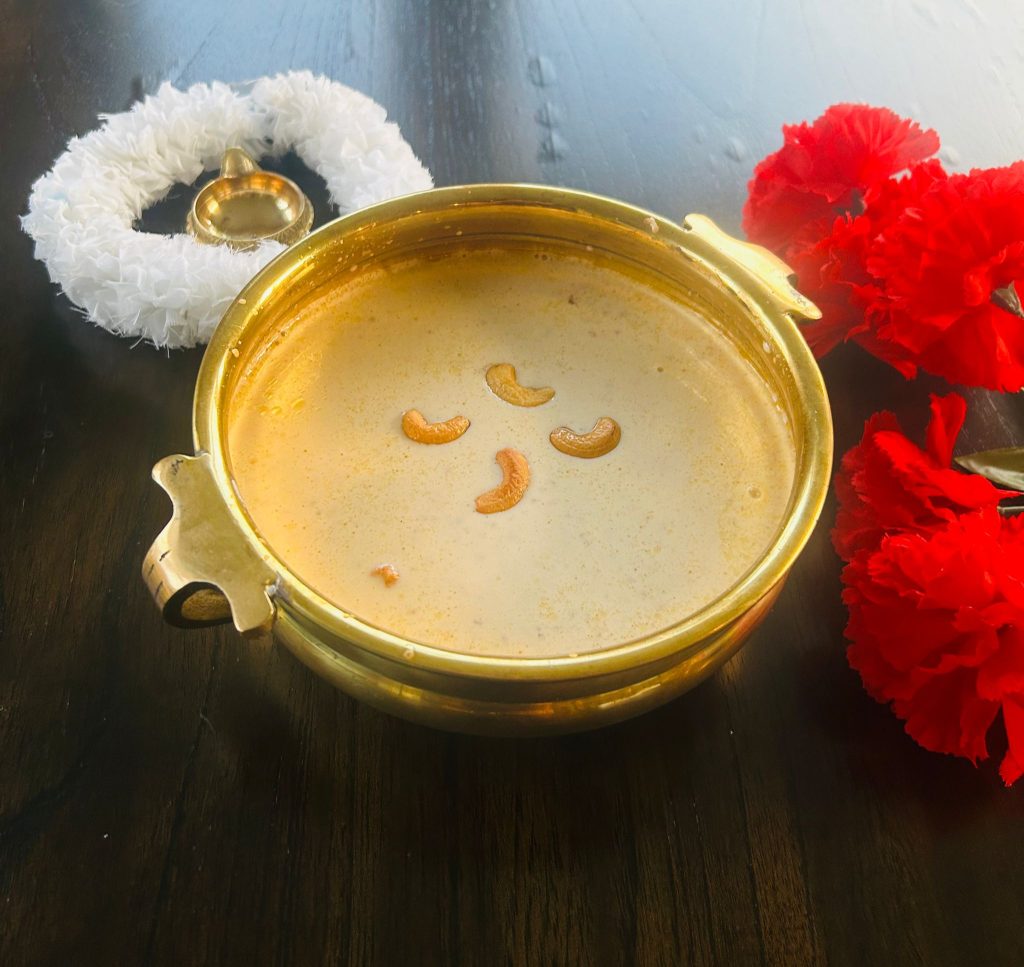
Notes
- For me, the pressure pin on the Instant Pot popped at 13:20.
- The sugar measurements above is for moderate sweetness; increase it by an extra tbsp if you prefer your payasam sweeter.
- Best results are with broken matta rice (podiyari)
- The same recipe can be tried in a 3 qt Instant Pot. Adjust the measurements accordingly.

Dear Kadambari aunty, thank you so much for your write up about the “ancient tales” of COMA beginnings. Every bit of history is to be remembered and cherished.